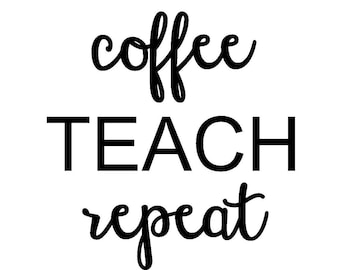 In class this past week, we discussed stakeholders in special education, as well as the procedures and details about transition services. As a whole, the week was a lot more broad in terms of content than past weeks, where we would focus on one disability, or process, such as RTI. We definitely zoomed out and analyzed the "bigger picture" of special education. I really enjoyed, and learned a lot, from the FlipGrid activity we did in class on Tuesday about different stakeholders in special education, and how to best navigate collaborating with them as special educators. It is so important for all of the stakeholders to be on the same page in order to best support the students, this includes parents and families, students, administration, specialists, community members, and government officials. Since every stakeholder should be working towards the same goal, with the student's best interest in mind, proper communication, teamwork, and collaboration needs to be implemented.
In class this past week, we discussed stakeholders in special education, as well as the procedures and details about transition services. As a whole, the week was a lot more broad in terms of content than past weeks, where we would focus on one disability, or process, such as RTI. We definitely zoomed out and analyzed the "bigger picture" of special education. I really enjoyed, and learned a lot, from the FlipGrid activity we did in class on Tuesday about different stakeholders in special education, and how to best navigate collaborating with them as special educators. It is so important for all of the stakeholders to be on the same page in order to best support the students, this includes parents and families, students, administration, specialists, community members, and government officials. Since every stakeholder should be working towards the same goal, with the student's best interest in mind, proper communication, teamwork, and collaboration needs to be implemented.Transition services, and learning more about the continuum of special education services under IDEA and ADA, was the other piece of course content that we covered. A lot of the information we discussed was not new to me, as I am very close to a girl with Down Syndrome from home, who went to school until she was 22 and created a plan for her postsecondary life. I was not aware of the specific legalities and loopholes within the transition services sector of special education, so I am glad to have received information about that. Having a transition plan is so important for students who receive special education services, and I wish that a new plan can be drafted once the individual accomplishes all of the goals on their transition plan. When the goals have been accomplished, or when the goals need to be revised, is when the continuum drops off, and leaves the individuals and their families on their own to continue the transition into an adult life. While my interests and intended career path lie in elementary education, it is important to understand the whole timeline of special education services.

I really loved this blog assignment. It forced me to engage with the course material in a way that was meaningful to me. It challenged me to be creative, make connections, reflect, and sense-make about special education, the broader field of education, and my experiences as a per-service teacher in a teacher education program. It also was extremely relevant to me, as I have been following both education and lifestyle blogs since high school. Blogging has always interested me, and doing for this class was a great way to get a taste of what keeping up with a blog is like. I even plan on blogging during my study abroad experience next semester because of this assignment. I really enjoyed this assignment and found a lot of value in it.
I was extremely nervous about taking EDU 342 as a sophomore. It was not that I was doubting my abilities, but I was worried about having a deficit in knowledge and experience compared to my other peers in the class. I was also worried about the fact that I really want to be a general education teacher, and not so much a special educator. (I am majoring in special education because I think it is so important to be a general ed. teachers who has a solid understanding of special ed.) While my concerns were valid, I feel that the class exceeded my expectations and only lifted me up as a pre-service teacher. I think I personally rose to the challenge of taking a junior year course, but it was worth it, and I have grown so much. I feel more comfortable discussing disabilities having studied the history, and policy, of special education, and learning about and practicing Person-First-Language. I feel like I adequately understand high-frequency disabilities, and how to best support students who have these disabilities. I have learned to plan lessons under the Universal Design for Learning framework, which is something I never have heard of before EDU 342, but now have come to understand, and apply it. I have also taught my first whole group lesson, which, as a sophomore, is pretty impressive! Foundations of Special Education has brought all of these opportunities to me, and I feel like I have grown and stretched myself by being a member of the class.
Comments
Post a Comment